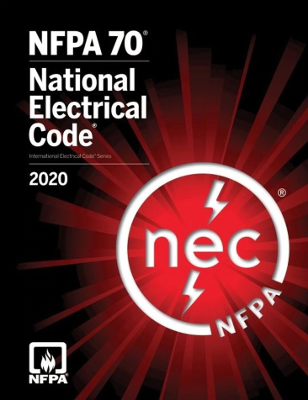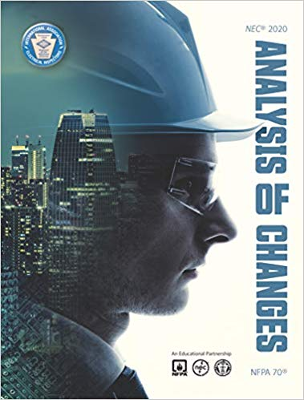In the rapidly expanding and evolving electrical industry, it’s critical to have the resources you need to be prepared for the very latest challenges and hazards. Since 1897, NFPA 70®, National Electrical Code® (NEC®), has set the standard for safe residential, commercial, and industrial work across the country and around the world. Get up to date and compliant with the 2020 NEC in a customizable and durable looseleaf format.
Incorporated by reference in all 50 states, the 2020 NEC offers the most current requirements for safer and more effective electrical design, installation, and inspection, including provisions for wiring, overcurrent protection, grounding, and equipment. The looseleaf edition features a durable, five-ring binder for you to insert and organize the specific technical information, tables, and other content you need for your project within the relevant sections of the Code.
NFPA 70 is continually reviewed and periodically updated to reflect the latest practices, trends, and technologies in the industry. The looseleaf 2020 edition has been enhanced and revised to provide state-of-the-art requirements and information for safe and effective electrical work.
Significant changes include:
Reorganization of Article 310, including new user-friendly numbering for important ampacity tables, and a new definition for cable bundle in Article 725
New requirements for exterior emergency disconnects of one- and two-family dwellings for improved electrical safety for emergency responders
Revisions to service disconnect rules to help protect electrical workers from arc flash hazards
Adapted and adjusted requirements for installation practices of new technologies to meet the evolving demand of power over Ethernet
Revisions to alternative energy systems and electric vehicle requirements to clarify what portions of the PV system are covered by the provisions of Article 690 and the line side and load side connections of interconnected power supply sources, and to clearly distinguish energy storage systems from storage battery systems
Reorganization of Article 800 to provide a general set of requirements to apply throughout the Chapter 8 articles
Updates to modernize tables currently in use for calculations to reflect improvements in energy efficiency and align with evolving codes
Revised requirements for ground-fault protection within marinas and boatyards
Introduction of requirements for the safe use of electric vehicles (electric vehicle power export equipment) as a backup or emergency power source for a building or a home
Relocation of surge protection device requirements to new Article 242
Revisions to requirements for communications cables that are also carrying power to communication devices and revisions to the current limit for cables carrying power and data
The NEC, 2020 edition, also introduces new requirements for:
Worker safety in identifying the source of power for disconnecting means and for egress from spaces containing large electrical equipment
The residential installation of receptacle outlets serving island and peninsular countertops and for surge protection of services supplying dwelling units
Working space for “housekeeping pads” for electrical equipment
The installation of wiring methods in exit enclosures
Sizing supply and load conductors used with adjustable-speed drive systems
AFCI protection of branch circuits in patient sleeping areas in care facilities
Calculating the load of electric vehicle supply equipment with variable current settings
Special occupancies, special equipment, and special conditions, including installation of splash pads, the use of “Type P” cables in hazardous classified locations, and the reinspection of swimming pools and other bodies of water
Grounding of disconnecting means installed on the supply-side of service disconnecting means
Cables installed exposed on ceiling surfaces and sidewalls




